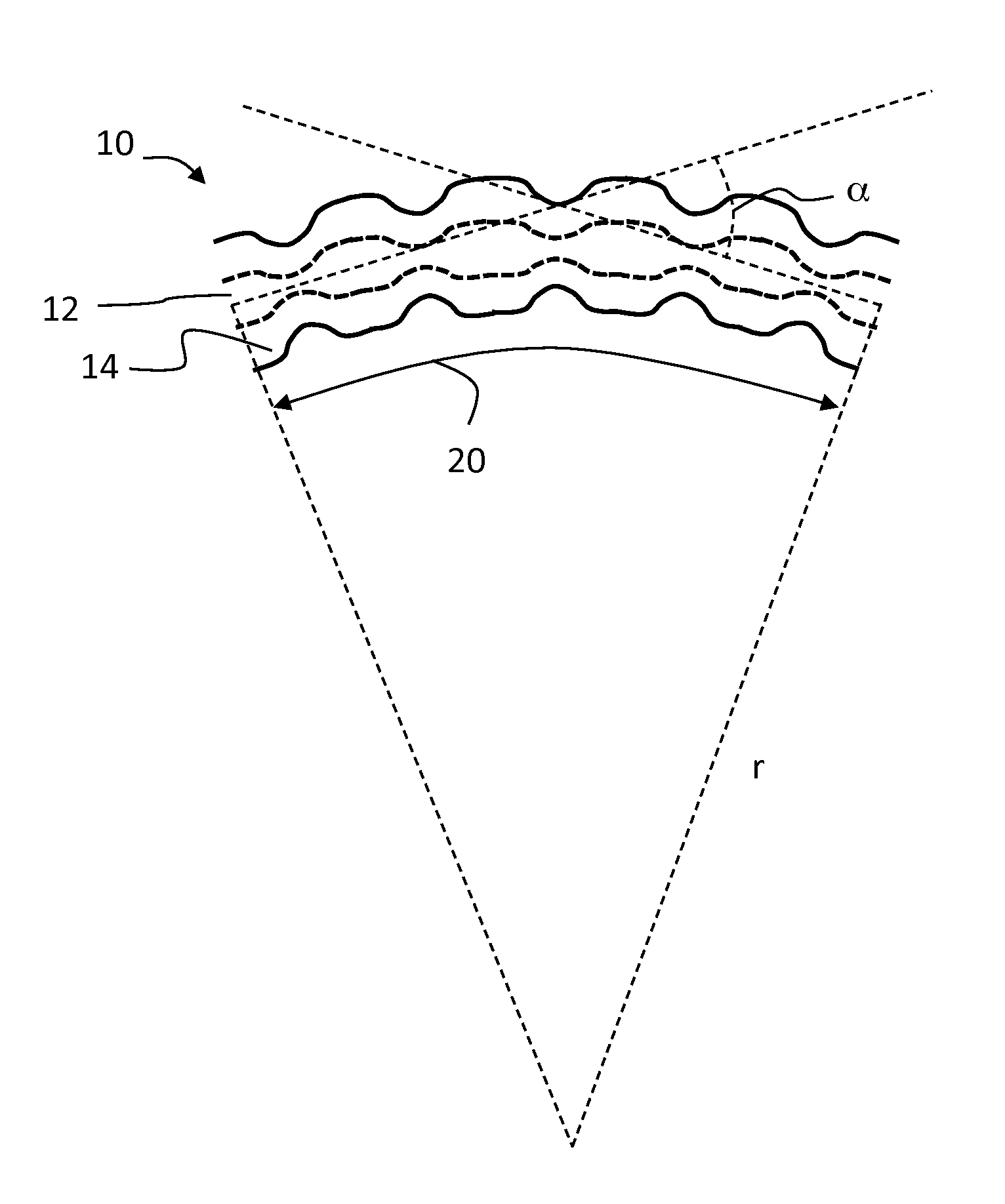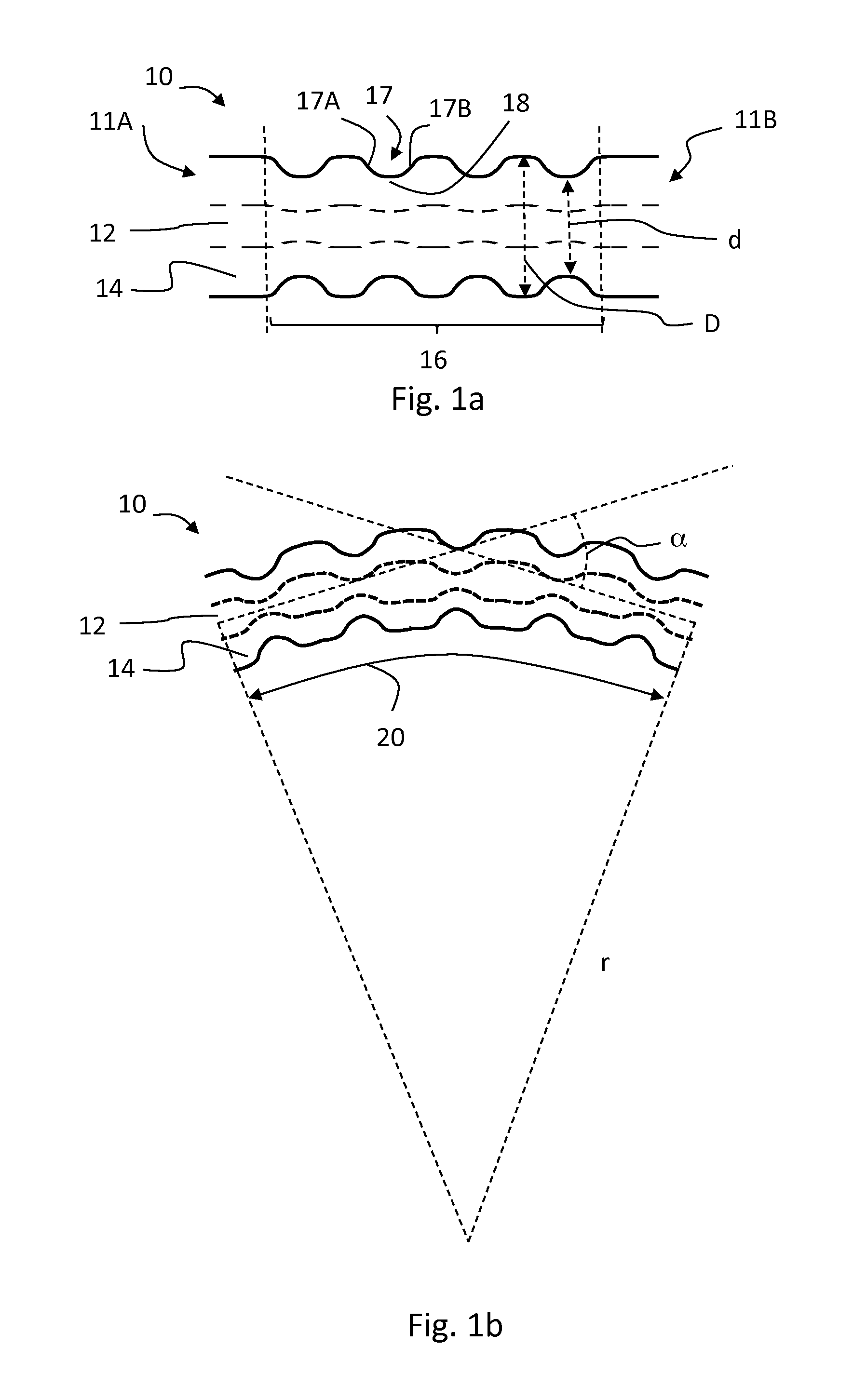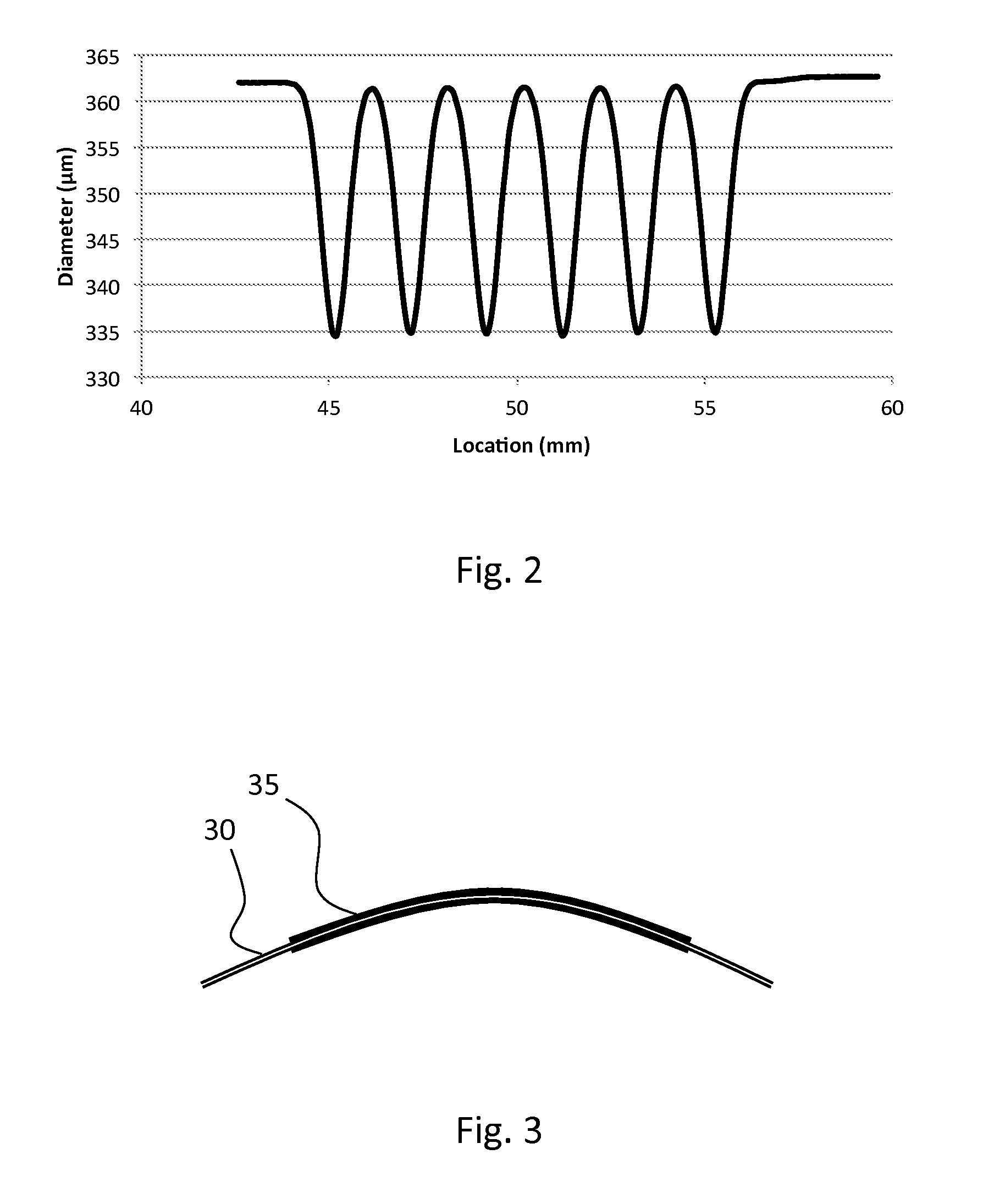Fiber optic mode scrambler and a method of manufacturing thereof
a fiber optic mode and fiber optic technology, applied in the field of fiber optic mode scrambler, can solve the problems of high brilliance lasers giving rise to new problems, distortion of output beams, and difficulty in controlling the particular application of lasers used, so as to reduce the translational symmetry of fibers and increase the level of fiber mode mixing
- Summary
- Abstract
- Description
- Claims
- Application Information
AI Technical Summary
Benefits of technology
Problems solved by technology
Method used
Image
Examples
Embodiment Construction
Definitions
[0037]The term “multi-mode optical fiber” refers to an optical fiber capable of carrying simultaneously a plurality of optical modes to be at least partially scrambled by means of the invention. Thus, the multi-mode fiber is understood here in the conventional sense of having a core that supports multiple optical modes. In typical end-user applications, the multi-mode optical fiber according to the invention is coupled to a multi-mode optical source, such as a fiber-laser source. The number of modes guided by a core of a multi-mode fiber can be hundreds. The best performance for the mode scrambler component of the invention is achieved with fibers having a strongly multi-mode character, where the optical mode spacing in propagation constant space is relatively dense, preferably less than 1000 m−1.
[0038]A “narrowing” means the combination of two tapers in the optical fiber, namely a down-taper gradually (over a down-taper length) reducing the diameter of the fiber from the...
PUM
 Login to View More
Login to View More Abstract
Description
Claims
Application Information
 Login to View More
Login to View More - R&D
- Intellectual Property
- Life Sciences
- Materials
- Tech Scout
- Unparalleled Data Quality
- Higher Quality Content
- 60% Fewer Hallucinations
Browse by: Latest US Patents, China's latest patents, Technical Efficacy Thesaurus, Application Domain, Technology Topic, Popular Technical Reports.
© 2025 PatSnap. All rights reserved.Legal|Privacy policy|Modern Slavery Act Transparency Statement|Sitemap|About US| Contact US: help@patsnap.com



